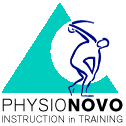Interaction of hip joint function with lowbackpain
Recent studies show how hip joint dysfunction can lead to lowbackpain.
In their studies, Roach et al. (2015) and Arab et al. (2019) showed a significant difference in hip extension in active individuals with NSCLBP compared to a control group. In addition to proper rotation of the hip, extension is another essential movement for optimal loading and function of the LWS and hip.
Reduced hip extension can compensate for hip flexion. Theoretically, it is possible that flexion with myogenic cause leads to increased activity of the low back muscles. Given the influence of gravity, a passive lumbar hyperextension is more likely (PG). In both cases, this, in turn, leads to premature and reduced lumbar spine (L5-S1) and the sacroiliac joint, as well as to reduced lumbar coordination. In persons with prolonged hip flexion, excessive anterior tilt of the pelvis occurs during walking to compensate for the lack of hip extension. Reduced hip extension therefore also leads to a deterioration of the feedforward motor system of the pelvis and therefore of the LWK. The role of limited mobility of hip abduction, adduction and flexion for the degree of lower back pain seems to be limited on the basis of the present research.
In their literature review Masahiro et al. (2020) found a significant correlation between low back pain or leg pain and degenerative diseases of the hip joint in gluteus medius syndrome (as a symptom of a functionally weakened hip joint). Appropriate treatment can improve the symptoms of the lumbar spine (even after unsuccessful back surgery) and the hip joint.
Gluteus medius syndrome is a major cause of back or leg pain and is similar to trochanteric pain syndrome, which is also associated with back or leg pain. Trochanteric pain syndrome, as a clinical symptom of (incipient) hip osteoarthritis, is associated with degenerative diseases of the lumbar spine, the authors say.
Stupar et al.pubmed.ncbi.nlm.nih.gov/20605553/ investigated the relationship between low back pain and hip osteoarthritis, among other things, in a cohort study as early as 2010. They found that low back pain can predict later arthritic pain and functional limitations of a hip joint.
Ayman et al. (2019) systematically reviewed 24 studies for the association between NSLBP (nonspecific low back pain) and hip joint ROM, finding that IR ROM was significantly reduced in more studies in NSLBP subjects compared to healthy subjects but with overall very low quality evidence.
But the authors themselves report with regard to the studies examined that ".... common causes of study bias included lack of or poor justification for sample size, blinding of reviewers, adjustment for important confounders, and poor reporting" and "...the result should be viewed with caution due to the low quality with appropriate evidence (of the studies reviewed,PG); further studies are needed"






